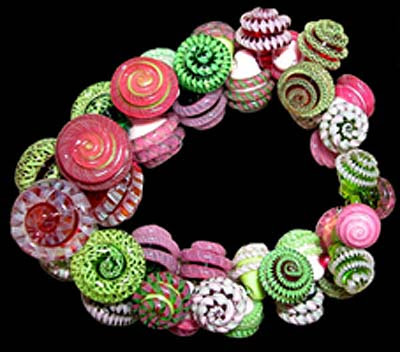Today, my dad and I setup my booth in the back yard for the sole purpose of taking a picture. (It was hard work and I couldn't have done it without him, so thanks Dad!)
Most arts and craft shows have an image to maintain and frequently request a picture of your booth along with images of your work in order to decide whether or not you meet their standards. To them, your presentation is almost as important as the originality and quality of your work, and it can be the deciding factor between you and another artist.
As I researched good booth shots, I was surprised to find that a "booth shot" is a picture of your "in-person" sales space that
represents your ability to display your wares. In other words, it doesn't have to be an actual set up of your booth in action, or the way you would set it up for a particular show.
The best information I found about booth shots was written by Larry Berman at
www.bermangraphics.com. I think the most helpful part was his article entitled
"Improving Your Art Show Booth Slide" (before the Internet age, most juries required actual physical slides - some still do!).
I took many pictures throughout the day and finally settled on the one below. I don't really like how the sun crept in on the far left side, but it was the best shot of the best arrangement all day, so I went for it.
Several shows I am applying for use a site called
Zapplication.org. The web application automates the entire jury process, including judging. It has specific requirements for photos, which is why you see those black spaces in the image below. When my booth shot comes up on a juror's black screen, the black spaces will blend into the background. (For non-Zapplicaiton.org shows, I'll submit a booth shot without black spaces.)
Now, on to the bead photos! Wish me luck!



















